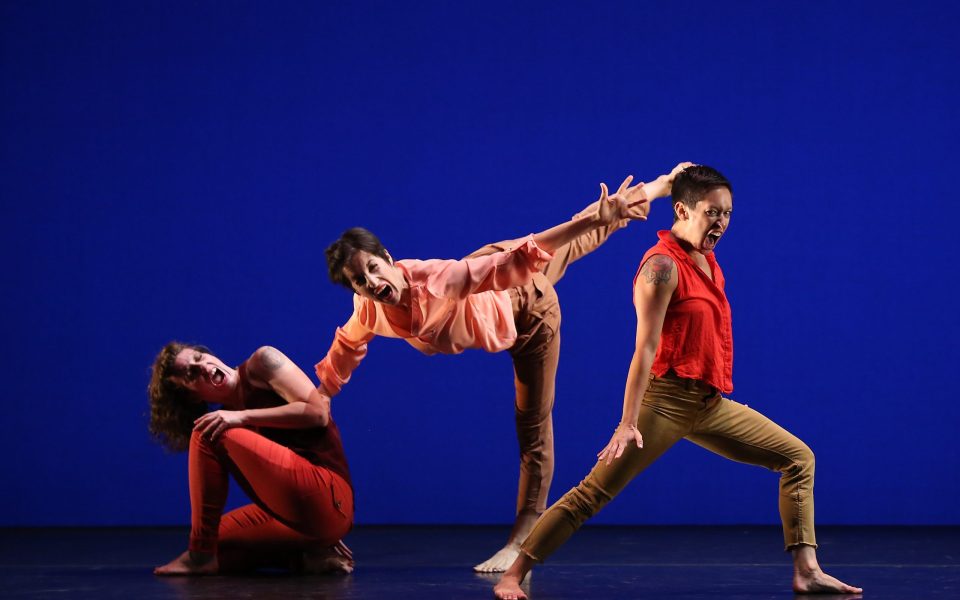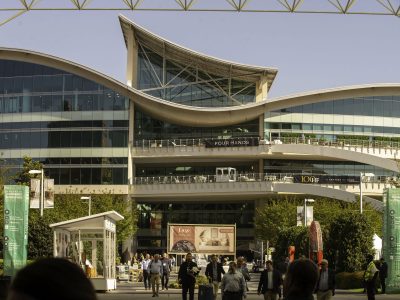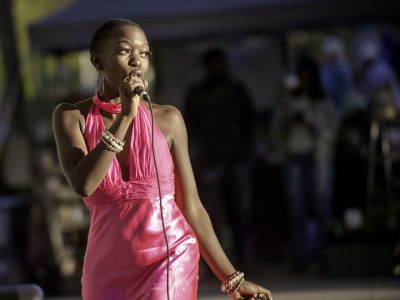Every time the music dialed down, the dancers’ steady breathing filled the auditory void in the Van Dyke Performance Space, the humble, matte-black stage flush with the floor in front of the steep rows of seats, nearly each one filled the night of Nov. 11.
Contemporary dancers and choreographers with the Greensboro-based Dance Project rounded out the North Carolina Dance Festival, a statewide tour, in the Gate City last weekend. The festival taps choreographers from across North Carolina to showcase experimental work.
The first piece, “Welcome,” made clear that the evening wouldn’t feel like an orthodox dance show in the least. The thudding of three young women’s feet on the wooden boards preceded the recorded thumping of drums and clinking of a tambourine. Sarah Ingel, Caitlyn Swett and Lillian Willis took turns — right beside one another, like dominos capable of re-erecting and chasing one another around the stage — tossing their hips sharply to their sides, exclaiming, “My pelvis is here!” Arms clothed in hot pink, maroon and peach took swift flight into a third position arc: “My elbow is here! This is the most here I’ve ever felt!” The trio’s playful, disjointed routine devolved into a contest, though — perhaps a meta-commentary on the competitiveness of the dance world or competition between women generally. Maybe it represented the futility of yearning for artistic perfection.
The dancers exited like birds, but two re-emerged from stage right. One set out plastic cups in front of another on the floor. The sitting woman constructed a castle made of cups instead of sand but the third returned to collapse it with her tip toe. Another cup castle, but the second woman knocked down its walls. (People will build you up just to tear you down, won’t they?) The builder rolled to her belly, congregated the more-than-a-dozen cups in her outstretched arms and slithered into the darkness like a reptile. She returned on two feet and broke the fourth wall, walking past the black paint denoting stage proper.
“You’re the strange ones — who sits this close at a dance concert?” she prodded. “I have a degree for this. I’m in a lot of debt for this.”
The lights faded to black, signaling a return to the plot. Before long, Ingel, Swett and Willis began to collaborate, suggesting postures that intertwined their bodies like arms wrapped around each other’s abdomen.[pullquote]Learn more about the Dance Project at danceproject.org.[/pullquote]
“Are you guys okay?”
Striking violet lighting accompanied heavy drumming and guitar as the women spun into an athletic, free-form sequence. Breathing heavily, they approach the audience, saying, “I’m still here,” and banded themselves into a jigsaw, all three faces gazing outward not inches apart.
After a large cast of dancers donning off-white and beige clothing alternately aligned into triangles and collapsed towards one another like human waves in “The EVOL//you//TION inPART,” Matt Pardo performed a vigorous, razor-sharp performance titled “I Insist.” Then, the finale: an excerpt from “For Love of Country.”
Four African-American dancers filed to the stage, slowly laying down upon each other in a loose lattice alignment. The two women wore simple dresses: one long and brown the other short and rusty red. The men sported long pants, one khaki pair buckled with a belt below a white button-down and the other accompanied by a lightweight, blue sweatshirt. They spoke of reparations and the plunder of black Americans before rising to face the audience side by side. As audio interviews from the Whiteness Project — an interactive exploration into how white people understand and experience race — played, the dancers took turns shoving each other to the ground in silence, maintaining eye contact with the crowd. Dance sequences — both collaborative and antagonistic — played out between performers of the same gender before only one woman and one man remained, the voices of white people still echoing through the sound system. From behind, she rested her forlorn face on his shoulder as they exited stage left, step-in-step. The lights shut off.
Join the First Amendment Society, a membership that goes directly to funding TCB‘s newsroom.
We believe that reporting can save the world.
The TCB First Amendment Society recognizes the vital role of a free, unfettered press with a bundling of local experiences designed to build community, and unique engagements with our newsroom that will help you understand, and shape, local journalism’s critical role in uplifting the people in our cities.
All revenue goes directly into the newsroom as reporters’ salaries and freelance commissions.





Leave a Reply